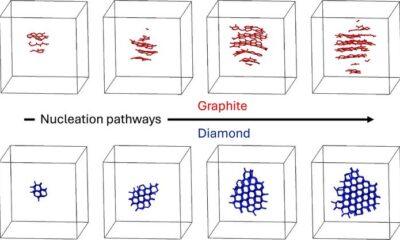Science
Male Pheasants Face Risks Due to Eye-Catching Courtship Displays

The striking courtship displays of the male Lady Amherst’s pheasant could expose these birds to greater dangers, according to recent research conducted by scientists at the University of California, Berkeley. The study highlights how the vivid plumage and elaborate behaviors intended to attract mates may inadvertently increase the risk of predation.
Male Lady Amherst’s pheasants are known for their spectacular golden feathers, which they unfurl to create an impressive cape around their necks during courtship rituals. While these displays are designed to entice females, they also serve as a beacon for predators. The research indicates that the very traits that make these male pheasants attractive to potential mates could also jeopardize their survival.
Impact of Attractive Traits on Survival
The study’s findings reveal a critical balance between sexual selection and natural selection. Male pheasants must navigate the challenges of attracting females while simultaneously avoiding becoming easy targets for predators. The researchers noted that males displaying their vibrant feathers were more visible to predators, which could result in higher mortality rates.
This phenomenon is part of a broader discussion about how certain traits evolve in animals. The trade-off between attracting mates and ensuring survival is a fundamental aspect of evolutionary biology. In the case of the Lady Amherst’s pheasant, this trade-off is especially pronounced due to their reliance on visual displays.
According to the research published in 2023, the implications extend beyond just the Lady Amherst’s pheasant. The study raises questions about other species exhibiting similar traits. Understanding these dynamics is crucial for conservation efforts, particularly as habitat loss and environmental changes continue to threaten various wildlife populations.
Conservation Considerations
The findings underscore the necessity for effective conservation strategies that consider the evolutionary pressures faced by species like the Lady Amherst’s pheasant. With their striking feathers attracting both mates and predators, efforts to protect these birds must account for both their mating behaviors and the ecological environments they inhabit.
As researchers delve deeper into the complexities of animal behaviors and their consequences, the need for informed conservation practices becomes increasingly apparent. Protecting the habitats of these pheasants not only helps preserve their populations but also allows for the continuation of their unique courtship displays, which are vital for their reproductive success.
In conclusion, the captivating displays of male Lady Amherst’s pheasants, while essential for attracting females, pose significant risks to their survival. The ongoing research serves as a reminder of the intricate balance within ecosystems and the importance of thoughtful conservation efforts to safeguard these remarkable birds for future generations.
-

 Entertainment3 months ago
Entertainment3 months agoAnn Ming Reflects on ITV’s ‘I Fought the Law’ Drama
-

 Entertainment4 months ago
Entertainment4 months agoKate Garraway Sells £2 Million Home Amid Financial Struggles
-

 Health3 months ago
Health3 months agoKatie Price Faces New Health Concerns After Cancer Symptoms Resurface
-

 Entertainment3 months ago
Entertainment3 months agoCoronation Street’s Carl Webster Faces Trouble with New Affairs
-

 Entertainment3 months ago
Entertainment3 months agoWhere is Tinder Swindler Simon Leviev? Latest Updates Revealed
-

 Entertainment4 months ago
Entertainment4 months agoMarkiplier Addresses AI Controversy During Livestream Response
-

 Science1 month ago
Science1 month agoBrian Cox Addresses Claims of Alien Probe in 3I/ATLAS Discovery
-

 Health4 months ago
Health4 months agoCarol Vorderman Reflects on Health Scare and Family Support
-

 World2 weeks ago
World2 weeks agoBailey Announces Heartbreaking Split from Rebecca After Reunion
-

 Entertainment4 months ago
Entertainment4 months agoKim Cattrall Posts Cryptic Message After HBO’s Sequel Cancellation
-

 Entertainment3 months ago
Entertainment3 months agoOlivia Attwood Opens Up About Fallout with Former Best Friend
-

 Entertainment2 weeks ago
Entertainment2 weeks agoCoronation Street Fans React as Todd Faces Heartbreaking Choice





















